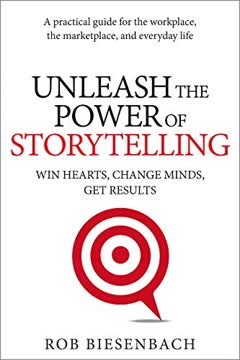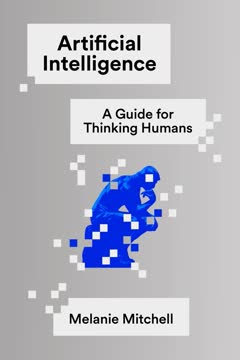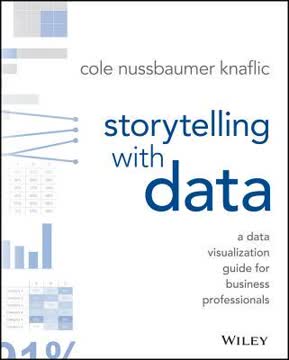Key Takeaways
1. Context is King: Know Your Audience and Purpose
A little planning can go a long way and lead to more concise and effective communications.
Understanding the audience. Before diving into data, identify who you're communicating with. What are their priorities, knowledge level, and potential biases? Tailor your message and visuals to resonate with their specific needs and interests. For example, presenting to senior leadership requires a different approach than presenting to a technical team.
Defining the purpose. What action do you want your audience to take? Are you informing, persuading, or seeking a decision? Clearly define your objective to guide your communication strategy. A well-defined purpose ensures that your data and visuals are focused and impactful.
The Big Idea. Craft a concise, compelling statement that encapsulates your main message. The Big Idea should articulate your unique point of view, convey what's at stake, and be a complete sentence. This serves as a North Star, guiding your content and ensuring a clear, focused message.
2. Visuals Speak Louder Than Tables: Choose the Right Chart
Any data can be graphed countless different ways.
Beyond the table. While tables are useful for data storage, they often require significant cognitive effort to interpret. Visualizations, when chosen effectively, can reveal patterns and insights more quickly and intuitively. Consider transforming tables into charts to enhance understanding.
Chart selection. Different chart types are suited for different purposes. Bar charts are excellent for comparing categories, line graphs for showing trends over time, and scatter plots for illustrating relationships between variables. Select the chart type that best highlights the key insights you want to convey.
Iterate and explore. Don't settle for the first visualization that comes to mind. Experiment with different chart types and layouts to discover the most effective way to present your data. Iteration is key to finding the visual that best tells your story.
3. Less is More: Declutter for Clarity
Every element we put in our graphs or on the pages and slides that contain them adds cognitive burden—each one consumes brainpower to process.
Eliminate unnecessary elements. Remove chart borders, gridlines, and excessive labels that don't contribute to understanding. Clutter distracts from the data and increases cognitive load. Simplify your visuals to focus attention on the essential information.
Strategic use of white space. White space, or negative space, is crucial for visual clarity. Use it to separate elements, create visual hierarchy, and guide the eye. Avoid overcrowding your visuals, allowing the data to breathe.
Gestalt principles. Leverage Gestalt principles, such as proximity, similarity, and enclosure, to visually group related elements and create a sense of order. These principles help viewers subconsciously organize and interpret the information.
4. Direct Attention: Guide the Eye with Purpose
Not everyone sees the same thing when they look at data, but by taking thoughtful design steps, you can help your audience focus on the right things.
Strategic use of color. Use color sparingly to highlight key data points or trends. Avoid overwhelming the viewer with too many colors. Choose colors that are visually distinct and accessible to those with colorblindness.
Preattentive attributes. Leverage preattentive attributes, such as size, intensity, and position, to draw attention to important elements. Make key data points larger, bolder, or more prominent to guide the eye.
Visual hierarchy. Establish a clear visual hierarchy to guide the viewer through the information. Use size, color, and placement to indicate the relative importance of different elements. Ensure that the most important information is the most visually prominent.
5. Design Matters: Aesthetics, Accessibility, and Acceptance
You know what great design looks like when you see it, but how do you actually achieve it—particularly if you don’t consider yourself a designer?
Aesthetics. Pay attention to the overall look and feel of your visuals. Use consistent fonts, colors, and styles to create a cohesive and professional design. A well-designed visual is more engaging and credible.
Accessibility. Design for inclusivity. Consider the needs of viewers with disabilities, such as colorblindness or low vision. Use high-contrast colors, provide alternative text for images, and ensure that your visuals are accessible to screen readers.
Acceptance. Tailor your design to your audience's expectations and preferences. Consider their familiarity with different chart types and their cultural background. A design that is well-received is more likely to be understood and acted upon.
6. Data Tells a Story: Craft a Compelling Narrative
Stories, on the other hand, are memorable.
Beyond the facts. Data alone is not enough. To make your message stick, craft a compelling narrative that connects with your audience on an emotional level. Use storytelling techniques to engage their attention and make your data more memorable.
Identify the tension. What problem are you trying to solve? What challenges are your audience facing? Clearly articulate the tension to create a sense of urgency and motivate action.
The narrative arc. Structure your presentation using the narrative arc: plot, rising action, climax, falling action, and resolution. This time-tested structure helps to build suspense, engage the audience, and deliver a satisfying conclusion.
7. Practice Makes Perfect: Hone Your Skills Continuously
There has never been a time in history where so many people have had access to so much data. Yet, our ability to tell stories with our graphs and visualizations has not kept pace.
Continuous learning. Data visualization is a skill that requires continuous practice and refinement. Seek out opportunities to learn new techniques, experiment with different tools, and stay up-to-date on the latest trends.
Seek inspiration. Explore data visualization galleries, blogs, and challenges to find inspiration and learn from others. Analyze what makes effective visuals work and adapt those techniques to your own work.
Embrace experimentation. Don't be afraid to try new things and push the boundaries of your skills. Experiment with different chart types, layouts, and design elements to discover what works best for you.
8. Feedback is a Gift: Embrace Critique for Growth
Give & receive effective feedback.
Solicit feedback early and often. Share your work with others and ask for constructive criticism. Be open to suggestions and use feedback to improve your visuals.
Be specific in your requests. When seeking feedback, be clear about what you're looking for. Are you concerned about clarity, accuracy, or aesthetics? Specific requests will elicit more targeted and helpful feedback.
Give constructive criticism. When providing feedback, focus on the work, not the person. Be specific, objective, and offer suggestions for improvement. Frame your feedback in a positive and supportive manner.
Last updated:
FAQ
1. What is Storytelling with Data: Let's Practice! by Cole Nussbaumer Knaflic about?
- Practical companion guide: The book is a hands-on follow-up to Storytelling with Data, focusing on applying data visualization and storytelling principles through exercises and real-world scenarios.
- Step-by-step skill building: It guides readers through the entire process of communicating with data, from understanding context to designing visuals and telling compelling stories.
- Interactive learning: Each chapter includes exercises, case studies, and solutions to help readers actively practice and internalize key concepts.
- For all skill levels: The content is accessible to beginners and valuable for experienced professionals seeking to refine or teach data storytelling skills.
2. Why should I read Storytelling with Data: Let's Practice! by Cole Nussbaumer Knaflic?
- Bridges theory and practice: The book helps readers move beyond theoretical knowledge to practical application, making it easier to communicate data effectively in real situations.
- Builds confidence and credibility: Through structured exercises and feedback, readers gain the skills needed to create clear, persuasive data stories.
- Supports teaching and coaching: It offers resources and strategies for managers, instructors, and leaders to teach and give feedback on data storytelling.
- Broad applicability: Examples and exercises span various industries and roles, making the lessons relevant for anyone who works with data.
3. What are the key takeaways from Storytelling with Data: Let's Practice! by Cole Nussbaumer Knaflic?
- Audience-first approach: Always start by understanding your audience and tailoring your message to their needs and interests.
- Clarity over complexity: Use simple, familiar visuals and remove unnecessary clutter to make your message easy to grasp.
- Intentional design: Apply design principles to guide attention, create hierarchy, and ensure accessibility.
- Practice and feedback: Regular practice, iteration, and feedback are essential for mastering data storytelling and fostering a culture of continuous improvement.
4. What are the best quotes from Storytelling with Data: Let's Practice! by Cole Nussbaumer Knaflic and what do they mean?
- “There is no single ‘right’ graph.” This emphasizes the importance of exploring multiple visual options to best communicate your message.
- “The Big Idea is your North Star.” The Big Idea should guide every decision in your data story, ensuring focus and clarity.
- “Remove to improve.” Decluttering visuals by eliminating nonessential elements helps your data stand out and reduces cognitive load.
- “Think like a designer.” Attention to detail, aesthetics, and user experience are crucial for creating effective and credible data communications.
5. How does Storytelling with Data: Let's Practice! by Cole Nussbaumer Knaflic define and use the “Big Idea”?
- Guiding message: The Big Idea is a single, complete sentence that articulates your unique point of view and what’s at stake for your audience.
- Worksheet-driven process: The book provides a worksheet to help distill and refine your Big Idea, ensuring clarity and focus.
- Central to storytelling: A well-crafted Big Idea serves as the foundation for your visuals and narrative, keeping your communication on track.
- Team alignment: Using the Big Idea collaboratively helps align teams and create buy-in for your message.
6. What is the recommended planning process for data storytelling in Storytelling with Data: Let's Practice!?
- Audience understanding: Begin by identifying who your audience is and what matters most to them.
- Crafting the Big Idea: Develop a clear, concise statement that captures your main message and its significance.
- Storyboarding: Organize your content visually, often with sticky notes, to map out the flow and structure of your story.
- Iterative feedback: Seek early and ongoing feedback on your audience analysis, Big Idea, and storyboard to refine your approach.
7. How does Storytelling with Data: Let's Practice! by Cole Nussbaumer Knaflic recommend choosing effective visuals for data?
- Message-driven selection: Choose visuals that best support the key point you want to communicate, not just what looks appealing.
- Explore multiple options: Experiment with different chart types (bars, lines, slopegraphs, dot plots) to find the most effective representation.
- Audience and data fit: Consider your audience’s familiarity and the nature of your data when selecting visuals.
- Low-tech iteration: Sketch ideas on paper before building them in software to quickly iterate and refine your approach.
8. What are common types of clutter in data visualization, and how does Storytelling with Data: Let's Practice! suggest eliminating them?
- Unnecessary elements: Remove borders, gridlines, redundant labels, and excessive data markers that add cognitive burden.
- Gestalt principles: Use proximity, similarity, enclosure, and connection to group related elements and create order.
- Streamlined labeling: Simplify axis labels and use direct data labels instead of legends to reduce back-and-forth scanning.
- Decluttering benefits: A cleaner visual makes your data stand out and improves audience comprehension.
9. What strategies does Storytelling with Data: Let's Practice! by Cole Nussbaumer Knaflic recommend for focusing audience attention in data visuals?
- Preattentive attributes: Use color, size, position, and intensity sparingly to highlight key data points and create visual hierarchy.
- Visual hierarchy: Employ bolding, uppercase text, and strategic placement to guide the viewer’s eye through the story.
- Testing emphasis: Use the “Where are your eyes drawn?” method to ensure the most important elements stand out.
- Accessibility: Avoid problematic color combinations and use redundant cues to ensure everyone can perceive emphasis.
10. What does it mean to “think like a designer” in Storytelling with Data: Let's Practice! by Cole Nussbaumer Knaflic?
- Affordances and guidance: Design elements should intuitively guide the audience through the data and make interpretation easy.
- Aesthetics and professionalism: Attention to alignment, font choice, and color consistency creates a polished, credible look.
- Accessibility: Ensure visuals are usable by people with diverse abilities, including those with colorblindness.
- Branding and clarity: Incorporate branding thoughtfully without sacrificing clarity or introducing misleading associations.
11. How does Storytelling with Data: Let's Practice! by Cole Nussbaumer Knaflic use the narrative arc in data storytelling?
- Arc components: The narrative arc includes plot (context), rising action (tension), climax (peak tension), falling action (details), and ending (resolution/call to action).
- Engagement and memorability: Structuring your story along the arc engages your audience emotionally and logically, making your message more memorable.
- Flexible structure: The order of arc components can be rearranged for better flow and impact, rather than strictly following chronology.
- Storyboarding: Use sticky notes or similar tools to organize and iterate on your narrative structure.
12. What are the differences between live presentations and stand-alone data stories in Storytelling with Data: Let's Practice! by Cole Nussbaumer Knaflic?
- Live presentations: Allow for progressive disclosure, building visuals step by step to guide attention and facilitate discussion.
- Stand-alone materials: Require fully annotated slides with takeaway titles, clear labels, and explanatory text for independent understanding.
- Complementary preparation: Prepare both live-friendly and comprehensive stand-alone versions to maximize communication effectiveness.
- Context and clarity: Ensure that stand-alone materials provide all necessary context, as the audience won’t have a presenter to fill in gaps.
Review Summary
Storytelling with Data receives high praise for its practical approach to data visualization. Readers appreciate its systematic methods, clear explanations, and helpful exercises. The book is valued for teaching how to declutter charts, build tension in presentations, and effectively communicate results. Many find it invaluable for improving their data storytelling skills, especially in professional settings. Some readers note its usefulness as a textbook or workbook, and appreciate the downloadable data for practice. Overall, it's considered an excellent resource for those in data-related fields.
Similar Books










Download PDF
Download EPUB
.epub digital book format is ideal for reading ebooks on phones, tablets, and e-readers.





